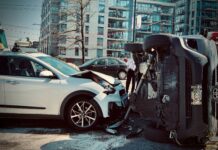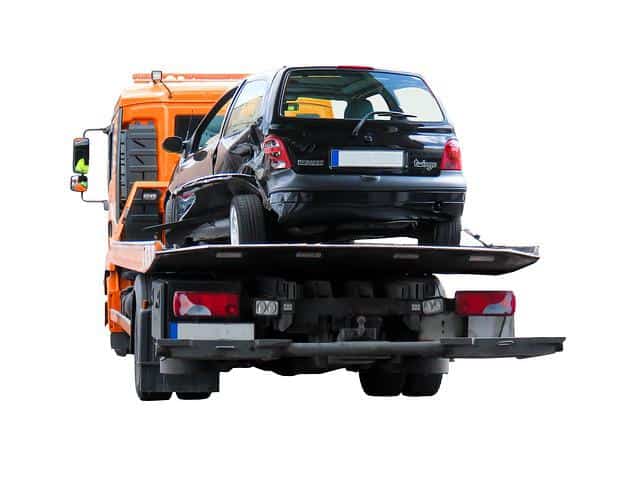
Have you ever been in a car accident where nobody wants to take the blame?
Trust me, you’re not alone. With around 6 million car accidents taking place in the United States each year, the process of determining fault has become one of the most complicated things when it comes to a crash investigation.
The issue is…
Not all accidents are simple fender benders where fault is clearly established. More often than not, they involve multiple vehicles, conflicting statements, and insurance companies who will stop at nothing to avoid a payout.
This is precisely why you need to understand how fault works — especially if you need to prove someone else caused your injuries.
In This Guide:
- Understanding How Fault Really Works
- The Most Complicated Accident Scenarios
- Evidence That Actually Proves Fault
- Why Professional Help Makes All The Difference
Why Is Proving Fault So Difficult?
Let’s start with the basics…
Proving fault is not about who yells the loudest at the scene of an accident. It’s all about evidence, traffic regulations, and understanding how liability really works.
If you find yourself facing serious injuries and mounting medical bills, you need experienced car accident lawyers who know how to build a solid case that can stand up to the tough tactics of insurance adjusters. These legal professionals are well-versed in the complexities of establishing fault and will know how to navigate the murky waters of those cases where liability isn’t so clear cut.
Did you know that driver error causes 95% of traffic accidents according to the National Highway Traffic Safety Administration?
The problem is that accidents that were caused by driver error prove who? That’s when things start to get a little tricky.
The Trickiest Accident Scenarios
Ready to know which accident types are the most difficult to prove when it comes to fault?
Multi-Vehicle Chain Reactions
A multi-car pileup is a nightmare when it comes to determining who was at fault.
Driver A rear-ends driver B, which pushes them into the vehicle in front of them (driver C). Sometimes three, four or even more vehicles get involved.
The million-dollar question: who is responsible?
Chain-reaction accidents involve several drivers and often, multiple causes of accidents. The driver who caused the first impact bears the most significant responsibility. This is not a rule written in stone though.
If the second driver was tailgating, they may be partially liable for hitting the third car. It’s complicated, which is precisely why these cases usually require accident reconstruction experts.
Intersection Collisions
Intersection accidents are some of the most commonly disputed types of crashes that are out there.
Both drivers will both claim they had the right of way. One will say the light was green and the other will swear it was yellow (or even worse, they both claim to have gotten there first at a stop sign).
If you can’t get your hands on traffic camera footage or reliable witnesses, you’re going to end up in a credibility war. Police reports will help, but these aren’t always conclusive.
This is why intersection crashes are so tricky…
The type of intersection also plays a big role here. Four-way stops don’t function in the same way as traffic lights, and yield signs create a different legal obligation than stop signs.
Figuring out who had the legal right of way in an accident will depend on having a solid understanding of traffic laws and how these apply to your specific situation.
Parking Lot Accidents
Parking lots are dangerous.
Parking lot crashes are some of the most common and notoriously difficult to sort out. The fact that most parking lots don’t have official traffic control devices makes the right-of-way determination extremely difficult.
Backing out of two spots at the same time? Both drivers could share 50% fault.
Pulling through a parking space and colliding with someone else entering the lot? Who’s at fault will depend on the visibility, the speed, and who could have reasonably avoided the collision.
Left-Turn Accidents
Left-turn accidents look simple on paper — unless they’re not.
Most of the time, the driver who was turning left is at fault since they must yield to oncoming traffic.
Simple, right?
What if:
- The oncoming driver was speeding and way over the speed limit?
- The driver going straight through the intersection ran a red light?
- The turning driver had the green arrow?
Suddenly, it’s not so black and white. These factors can shift the fault 100% or partially to the other driver.
Evidence That Actually Proves Fault
Ok, let’s get down to brass tacks…
So how do you prove what really happened?
Police Reports
Police reports are the first place to start but not the last.
Police officers are trained to document their observations at the crash scene, and most will give an opinion on who they believe caused the accident. This is helpful but, of course, it’s not the final say on liability.
Physical Evidence
The position and severity of vehicle damage can tell you exactly what happened.
The point of impact, how severe the damages are, what is the debris field distribution?
Accident reconstruction specialists can analyze this physical evidence to determine things like vehicle speeds, angles of impact, and the timing of each crash. This can be especially valuable in the absence of reliable witness statements.
Witness Testimony
Neutral third-party witnesses can be a case’s make or break.
Unlike the drivers involved in a crash (who have an obvious bias towards not being at fault), witnesses to an accident have no vested interest in what happened. This makes their testimony carry a lot more weight with insurance companies and juries.
The only issue is that you need to secure witness information quickly after the crash.
Witnesses disappear in a heartbeat.
Video Footage
This is the most reliable evidence you can find.
Traffic camera video, security camera video from nearby businesses, and even dashcams can all provide ironclad evidence of what really happened in a crash. Video evidence doesn’t lie, doesn’t forget important details, and can’t change its story.
If there is video footage available, you’ll want to get your hands on it fast before it gets erased or recorded over.
Electronic Data
Cars these days are computers on wheels.
Event data recorders (black boxes) in vehicles record all sorts of info in the moments leading up to a crash. This includes vehicle speed, braking, steering, seat belt use and more.
This data is important because it can prove whether a driver was speeding, failed to brake in time, or made a sudden dangerous maneuver.
Professional Help Makes A Difference
Look, let’s be real with one another…
Insurance companies are not your friends. In fact, the minute they accept your liability claim, they start looking for ways to reduce that payout.
They will:
- Lie and twist your words against you
- Insist that you were partially at fault so they don’t have to pay as much
- Offer you a ridiculous low-ball settlement before you know the true extent of your injuries
- Drag their feet in hopes that you’ll give up
They have no loyalty or conscience, but that’s precisely why you need to have someone on your side who does.
Accident attorneys who are experienced in these cases will know how to:
- Investigate crashes and gather evidence
- Preserve important evidence
- Deal with insurance company tactics
- Value your claim appropriately
- Negotiate a fair settlement that truly compensates you
They’ve seen all these situations before and understand exactly what it takes to prove fault in the most complicated of cases.
The Bottom Line
Proving fault in complex accident situations is not a DIY process.
When you have so much on the line, your medical bills, lost income, pain and suffering, and your future wellbeing, it is critical to have someone in your corner who knows how to navigate these issues.
The good news?
You don’t have to figure all this out by yourself.
If you’ve been injured in an accident where fault is disputed or unclear, reach out to legal professionals who can investigate your case, gather evidence on your behalf, and fight for the compensation you deserve.
Don’t let insurance companies take advantage of you when you’re in a confusing situation. Get the help you need to prove what happened and hold the people responsible accountable.
Because when fault is complicated, the solution shouldn’t be.






